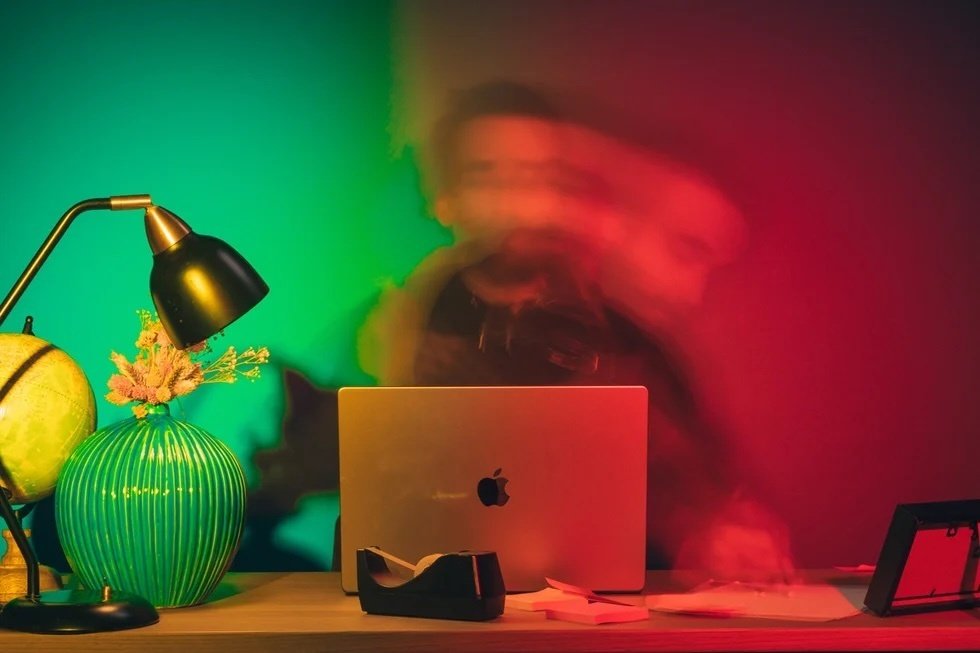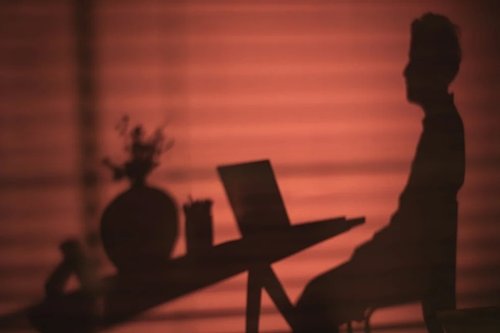The distraction dilemma: How to navigate a workforce with shrinking attention spans
04 jun 2024
7 min


US Senior Editor at Welcome to the Jungle
In our digital world, distractions are everywhere. Finding the time and space to focus is getting harder, especially when we’re expected to be ubiquitously available online. Our days are punctuated by pings. And, even when we do get some time to ourselves, it can be a challenge to sit down and focus on getting deep work done.
If focus is the ability to direct our attention to a task, distraction is the enemy that rips it from our clutches. We live in a world where everyone and everything is competing for our attention as if it were monetized—and, nowadays, it often is. In the late 1960s, political scientist and Nobel laureate Herbert A Simon coined the term “attention economy” to describe attention as a limited resource in our information age, warning that “a wealth of information creates a poverty of attention.”
Our attention spans have been decreasing for at least 20 years, now sitting at just under a minute.
How does this affect our work? Are our digital lives to blame for our inability to focus? Or are our brains evolving to adapt to an information age? Or, rather, to an age of distraction?
Where is our attention going?
Achieving focus is the result of a lot of little things going right: a good night’s sleep, a healthy diet and—arguably the most challenging—a distraction-free environment.
This can be hard to manage. Over the past two decades, time spent in collaborative activities at work, such as meetings, is estimated to have increased by at least 50%, causing performance to suffer as employees struggle with competing demands. At the same time, the average US smartphone user receives up to 46 push notifications a day.
Notification overload leads to anxiety and errors, according to a study published in the Journal of Occupational Health, while increasing the amount of time it takes to complete a task. This is detrimental to our overall wellbeing. Rushing to respond to not-so-quick questions so we can get back to our work quickly leaves our goal-driven brains feeling irritated and exhausted.
The constant use of social media and smartphones has led to a medical condition called phantom vibration syndrome, where the brain creates invisible notifications to react to—because it has been conditioned to do so. This means our brains are creating the distractions themselves because they’re so used to the constant buzz barrage.
Turning off notifications isn’t necessarily the solution either, as it can trigger those of us with high FOMO—fear of missing out—to interrupt ourselves to check for updates, the study adds.
“Humans are actually inherently motivated to self-interrupt, which means that we constantly have urges to do something else,” Dr Gloria Mark, professor at UC Irvine and author of Attention Span: A Groundbreaking Way to Restore Balance, Happiness and Productivity, told Columbia Magazine. “So even if we turn off audio or visual signals, just knowing that we can stop our current task at any point to go online or check social media is difficult to ignore.”
It’s not just notifications that are demanding our attention. We’re also multitasking—often unsuccessfully. We’re using a lot of different apps—nine, on average—to do our work and it’s tanking our productivity. That’s because each time we switch between platforms, we have to reorient our focus back to the task at hand, but it takes our brains time to readjust—all while managing those pesky emails, instant messages, and dreaded cold calls.
May I have your attention, please?
Our brains tell us they crave quiet time, but what do they do once they get it?
The mental ping-pong we have to play to stay on top of our digital work environment takes more effort than focusing on one individual task would, incurring what experts call a switch cost. Digital distractions challenge our brain’s attention-regulating neural networks, so deep work comes less easily. The more we bounce from one task to another, from app to app, the less mental energy we have to concentrate, thus decreasing our attention spans. It takes us on average 23 minutes to get our focus back following a distraction.
That’s not to say that all distraction is bad. Some attention switching can be beneficial if done at the right juncture. Mark told the American Psychological Association that finding a “break point,” or a natural stopping point in a task, and then taking a step back can help you return to the primary task with a renewed focus and fresh inspiration.
Even with that, 33% of the workers in a 2022 Asana survey felt that their attention spans were getting shorter, with higher numbers among Gen Z (48%) and millennials (42%).
The problem starts at school. The Pew Research Center reports that 31% of teens said they lost focus in class because they were checking their phones, while 49% said using technology for off-task use was distracting.
In the workplace, are we that dissimilar? Not really. A 2023 survey found that we checked phones more than 144 times a day. Another study found that workers spend about 44 minutes on social media per day, with another 60 minutes dedicated to reading news sites.
Even when we give ourselves a break, the culture of distraction remains, rearing its head, in our heads. Our digital world is fostering a subpar mental agility, not necessarily mental stability or focus. Our attention spans are simply adapting to the ecosystem we’ve built.
What our fleeting focus means for the workplace
Our ability to focus for long stretches seems to be diminishing, and our brains may be changing, so shouldn’t our work environment follow suit? What could the future of work look like if we tried to accommodate our shrinking attention spans?
Death to open-plan offices?
Today, the majority (70%) of offices have an open floor plan. Though it can bring teams together (literally and figuratively), it doesn’t seem to help us work more efficiently.
In the open-plan office, there are a greater number of distractions. Background chatter, antsy colleagues, the infamously loud keyboard-clackers—they can put a damper on productivity. The noise pollution alone can impact our cognitive performance, and can reduce visual and auditory attention as noise levels increase.
Knowing this, it may come as no surprise that more than half (57%) of workers would start looking for a new job if their current company didn’t have any remote work benefits.
However, younger workers still want to have in-office options, with 65% of Gen Z employees preferring hybrid models, higher than any other age group. In an Indeed survey, 92% of Gen Z participants who have never had a full-time in-office position report feeling as though they are missing out on traditional workplace experiences.
So, despite their challenges, maybe getting rid of open-plan offices isn’t the solution, but ensuring dedicated focus spaces can help give workers room to work their concentration muscles.
Communication breakdown
Sometimes, it seems as if the digital workplace was designed for distraction. Many of the most common digital workspace software applications—Teams, Slack, and Google Workspace, to name a few—aim to foster efficiency and productivity.
In practice, though, online workspaces are the digital equivalent of the open-plan office, serving up constant noise, chat messages, and notifications.
Vox dove into this issue and found that, although many of these apps were intended to reduce the deluge of emails and calls that some office staff had to handle on a daily basis, some people are returning to email so they can send well-thought-out communications in place of on-the-fly instant messages.
“Communication seems like a good thing until you have too much of it,” writes Rani Molla for Vox. “Because it’s so easy to talk to our colleagues using workplace software, many of us are typing too much. And not all these missives are helpful. In other words, talk is cheap and we’re spending like crazy.”
If we are to get any focused work done, it looks like we might need to change the way we collaborate online. Identifying the right communication channels, for the right information at the right time, and implementing that system company-wide may help train our brains to focus.
The right to disconnect
With hybrid and remote work becoming the norm in many businesses, the line between the personal and the professional is blurred—especially as many of us sleep just steps away from our home offices.
This issue is being brought to lawmakers’ attention. In San Francisco, assemblyman Matt Haney introduced Bill 2751, which would protect the freedom to ignore work-related notifications outside of working hours. If passed, this bill would make California the first state to make disconnection a legal right.
“This is the consequence of a technology that has left us 24/7 available,” Haney told HR Grapevine. “It shouldn’t leave us 24/7 working.”
Outside of the US, several countries have passed similar laws, including France, and the European Commission is following up on devising a region-wide directive.
Legislation like this could protect us from picking up the slack after hours if our task-switching, distracted brains aren’t as productive as we’d like during the working day. And it could give us the time to recharge our batteries, thus helping to end the cycle of distraction—so long as we stay off social media.
Built-in focus time
Being allowed to switch off from work can’t be expected to fix all our problems when it comes to concentrating; our work environments need to be structured in a way that prioritizes necessary focus time. To this end, some workers are adopting disconnection strategies during working hours, allocating designated quiet times to nurture individual productivity.
Cal Newport, author of Deep Work: Rules for Focused Success in a Distracted World, recommends allocating 90-minute blocks of time throughout the week for deep work.
“One way I train my focus is to regularly use an outdoor office; one way I protect deep work in my week is to schedule it on Monday morning on my calendar like any other inviolable appointment; and one way I demonstrate respect for my attention is that I’ve never had a social media account,” Newport writes.
Finding balance
It’s a rare person who can maintain razor-sharp focus while bombarded with distractions. Most of us need quiet time if we are to develop our powers of concentration and keep our attention on the task at hand. But if we can find the perfect balance between collaboration, messaging, and deep work, while resisting communication fatigue and the challenges our digital workspaces may introduce, perhaps we can be the ones who resist the trend towards shrinking attention spans.
Photo: Thomas Decamps for Welcome to the Jungle
Follow Welcome to the Jungle on Facebook, LinkedIn, and Instagram and subscribe to our newsletter to get our latest articles every week!

Más inspiración: Future of Work

From battlefields to bad bosses: Fostering resilience in the workplace
From fighting Boko Haram to surviving Silicon Valley, Air Force general and tech entrepreneur Mandy Birch talks about where resilience comes from.
26 jun 2024

Can companies avoid a brain drain as retirements surge?
Bye bye, Baby Boomers. Hello, knowledge exodus?
12 jun 2024

The future is flex office: The evolution of our workplaces
Explore how flex offices and hybrid work models are redefining workplaces with Lab expert David Blay.
06 jun 2024

Why your vote matters: The impact of worker activism on historic labor legislation
Workers remain the catalyst for legislative labor reform. Discover the history behind how your vote impacts the workplace.
29 may 2024

Is a world without work (really) possible?
Our Lab expert Laetitia Vitaud explains why she doesn’t believe in a future of unemployment and leisure.
19 feb 2024

¿Estáis orgullosos de vuestra cultura empresarial?
Dadle la visibilidad que merece.
Más información sobre nuestras soluciones